2016 US Presidential Debate Analysis, The Handshake
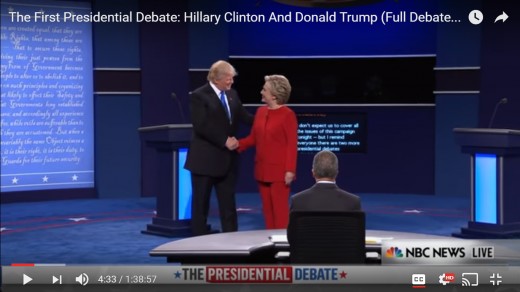
Preface
This analysis, of the first 2016 Presidential Debate, seeks to answer the question posed by candidate Hillary Clinton:
You have to judge us, who can shoulder the immense, awesome responsibilities of the presidency. Who can put into action the plans that will make your life better.
We were told we have to judge. But, do we have follow this dictate and judge? If we judge, how do we judge? What criterion and investigative methodology do we use to judge? How do we know if the candidates are genuine? How do we find the truth?
To provide meaningful discussion on this difficult question, this author has broken this analysis and discussion down into manageable portions and selected a behavioral model of investigative research. In this analysis only the empirical data within the photo frames of the NBC debate video.
This analysis presents data only from 'The Handshake' of the two candidates; the predictive validity of one short series of behaviors is of course limited, but it is somewhat helpful in establishing a baseline of behavior for these two candidates.
Discussion on Methodology
Candidates proposed to us two investigative methodologies with which, they suggested we use, to make our decision. They proposed 'fact checking' and 'temperament assessment'. Both methodologies are inherently flawed for this investigation with questionable predictive validity.
Methodology of Fact Checking: Not only is fact checking inherently flawed for this investigation because of disputed facts and questionable historians, but moreover, it is only half of a methodology and is better known as Historical Research--which, on the other hand, is a valid methodology.
Historical Research is, as defined by the University of Southern California:
The purpose of a historical research design is to collect, verify, and synthesize evidence from the past to establish facts that defend or refute a hypothesis. It uses secondary sources and a variety of primary documentary evidence, such as, diaries, official records, reports, archives, and non-textual information [maps, pictures, audio and visual recordings].
The limitation is that the sources must be both authentic and valid...
Considering that these candidates may not be considered reliable historians, any investigation attempting to use historical data to evaluate these candidates will yield convoluted results.
Moreover, that fact collection is only part of the Historical Research methodology, unless this investigation of the facts includes a systematic examination, then this methodology is flawed for use in this circumstance.
Methodology of Temperament Assessment: Temperament, as used by the lay person, is not the same as used by psychologists; the evaluative options for temperament are extensive and depend upon which definition of temperament you wish to utilize.
Temperament is so misunderstood that, according to Merriam-Webster, "Lookups for temperament spiked 78 times over our hourly average as the presidential debate caused people to turn to our dictionary in search of that word’s many meanings."
In hopes of convincing us that they had the better temperament, the candidates stated:
I think my strongest asset, maybe by far is my temperament. I have a winning temperament. I know how to win. She does not.
--Donald Trump, Presidential Debate TranscriptThat's bad judgment. That is not the right temperament to be commander in chief....
--Hillary Clinton, Presidential Debate Transcript
A simple definition of temperament as put forth by Merriam-Webster:
The simple definition of temperament is the usual attitude, mood, or behavior of a person or animal.
A more complex definition of temperament by the Psychology Online Dictionary:
The fundamental groundwork of character, generally presumed to be biologically determined and existent early in life, inclusive of traits like emotional reactiveness, energy level, reaction tempo, and motivation to explore. In animal actions, is explained as an individual.
How does the average American citizen then judge these two candidates for truthfulness? How does the average citizen answer the all important question-- which candidate is more suited to the high level of the US presidency? This author proposes a forensic approach.
According to Mark I. Levy, M.D., and Ronald H. Roberts, Ph.D. in their White Paper for the San Francisco Bar:
The utilization of tools from forensic psychology can be helpful in educating the fact finder about issues that bear directly upon questions of truthfulness.
In forensic profiling, behavioral data is frequently utilized to make risk and truth assessments. Techniques utilized in forensic profiling are not significantly different to the techniques we use on a daily basis to determine truthfulness in other people. Police officers, mom's, educators, and the like make daily assessments of truth and risk.
We can make these assessments because people have similar micro expressions and behaviors across gender, race, or age. These "tells" we see which cause us to feel someone is telling the truth or is not truthful appear constantly and are nearly impossible to remove, even with significant coaching. Actors study for many years to master micro behaviors and when you see an actor you feel is "genuine", then that actor has mastered the use of manipulating their micro behaviors.
Frame by frame analysis of screenshots NBC video 4:16 - 4:35
To answer the thesis question, this analysis only utilizes the undisputed available empirical data within the debate video.
The methodology choice for this analysis is Behavioral Observation. The behaviors of the candidates are captured frame by frame allowing for the examination of micro expressions and behaviors.
See the captions below the screenshots for observations on the photo; Hillary Clinton and Donald Trump will be hereafter referred to as "HRC" and "DJT" respectively.
Frame 4:16
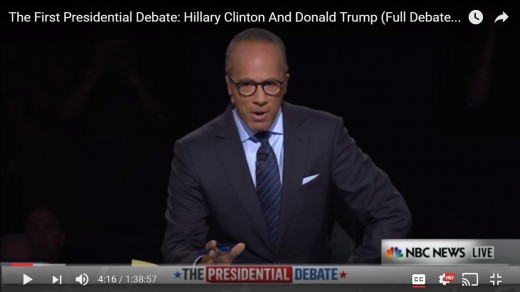
Frame 4:24
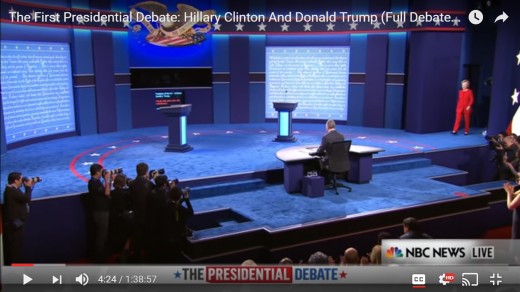
Frame 4:25
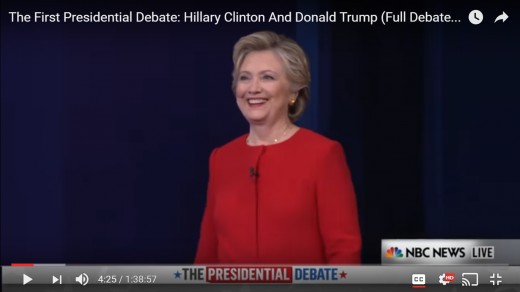
Frame 4:26
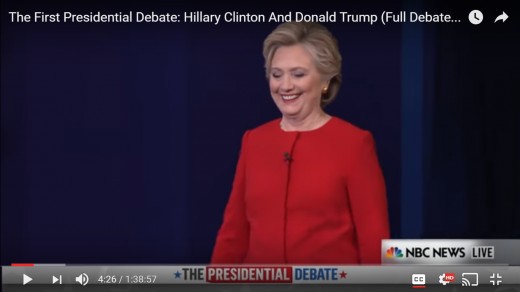
Frame 4:27
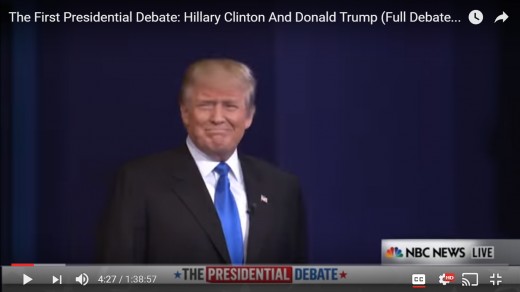
Frame 4:28
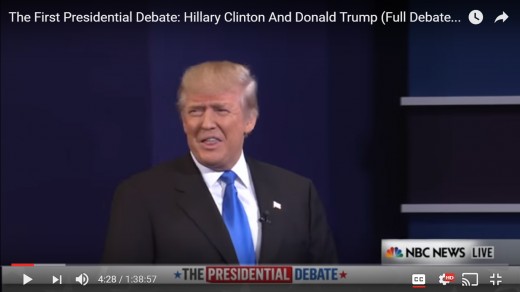
Frame 4:29 a
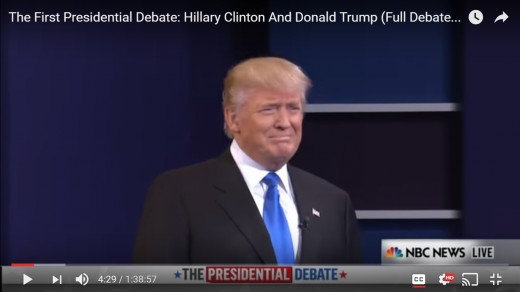
Frame 4:29 b
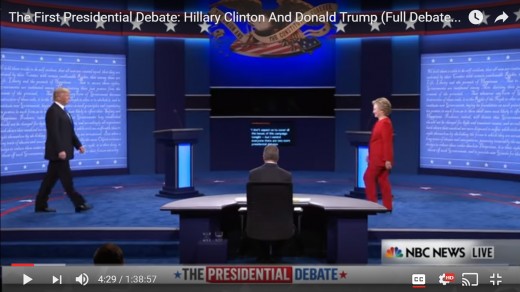
Frame 4:30
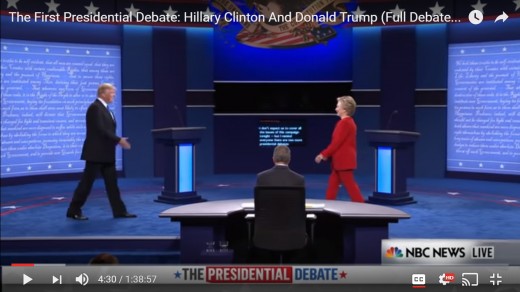
Frame 4:31 a
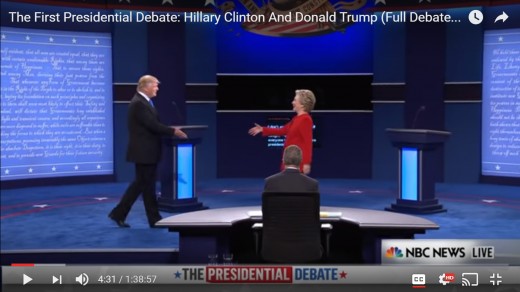
Frame 4:31 b
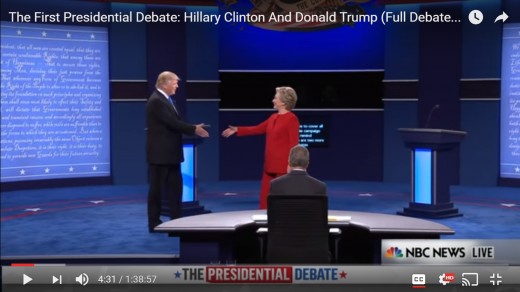
Frame 4:31 c
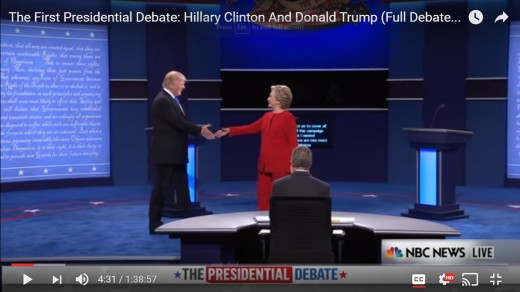
Frame 4:32 a
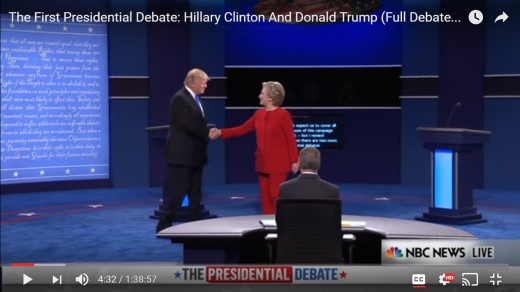
Frame 4:32 b
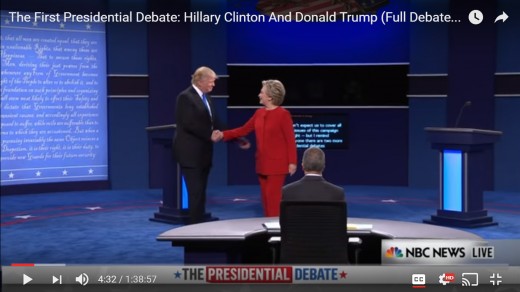
Frame 4:32 c
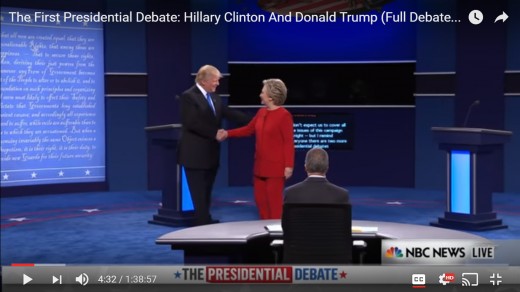
Frame 4:32 d
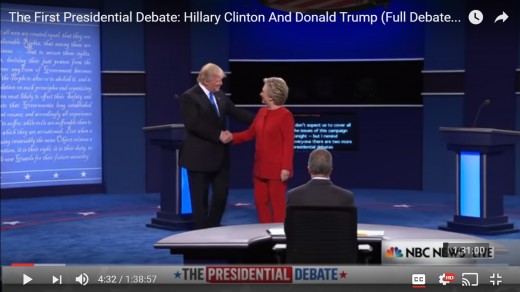
Frame 4:33
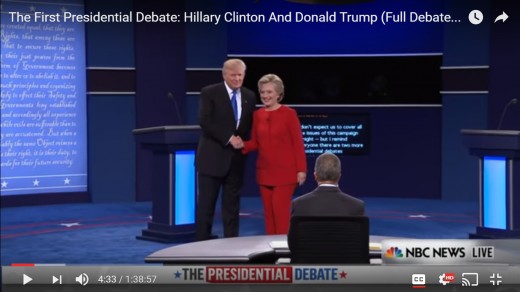
Frame 4:34 a
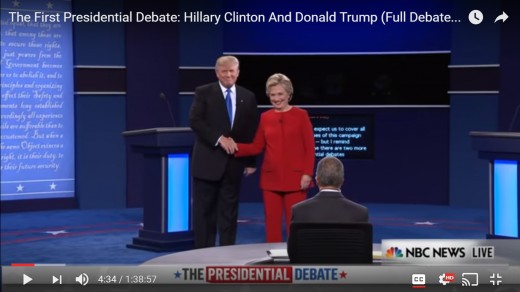
Frame 4:34 b
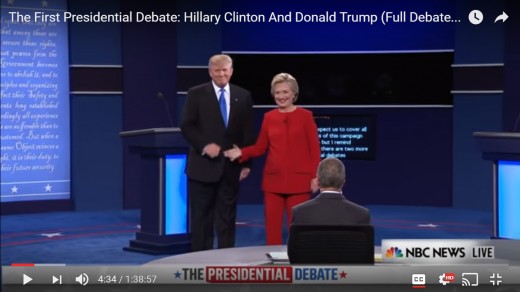
Frame 4:35 a
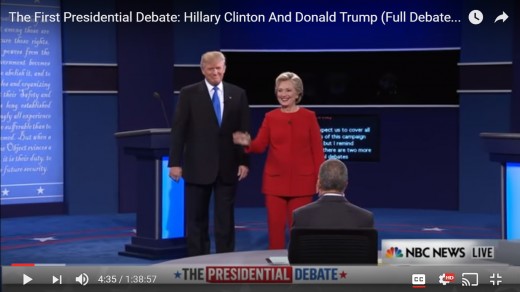
Frame 4:35 b
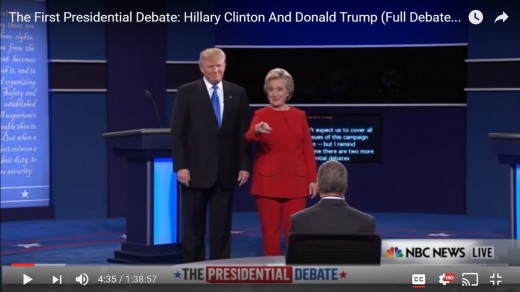
REFERENCE MATERIAL
CONCLUSION
Rather than provide a conclusion at this time, this author finds it to be more helpful to the reader to examine the photos independently of bias, and draw conclusions after viewing the previous reference videos included for education on micro expressions and behavior.
This author's conclusion and choice for president will be provided at the end of the this debate series in hopes that the reader will glean helpful tips on spotting micro behaviors to enhance the reader's ability to answer the thesis question, i.e., You have to judge us, who can shoulder the immense, awesome responsibilities of the presidency. Who can put into action the plans that will make your life better.
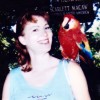
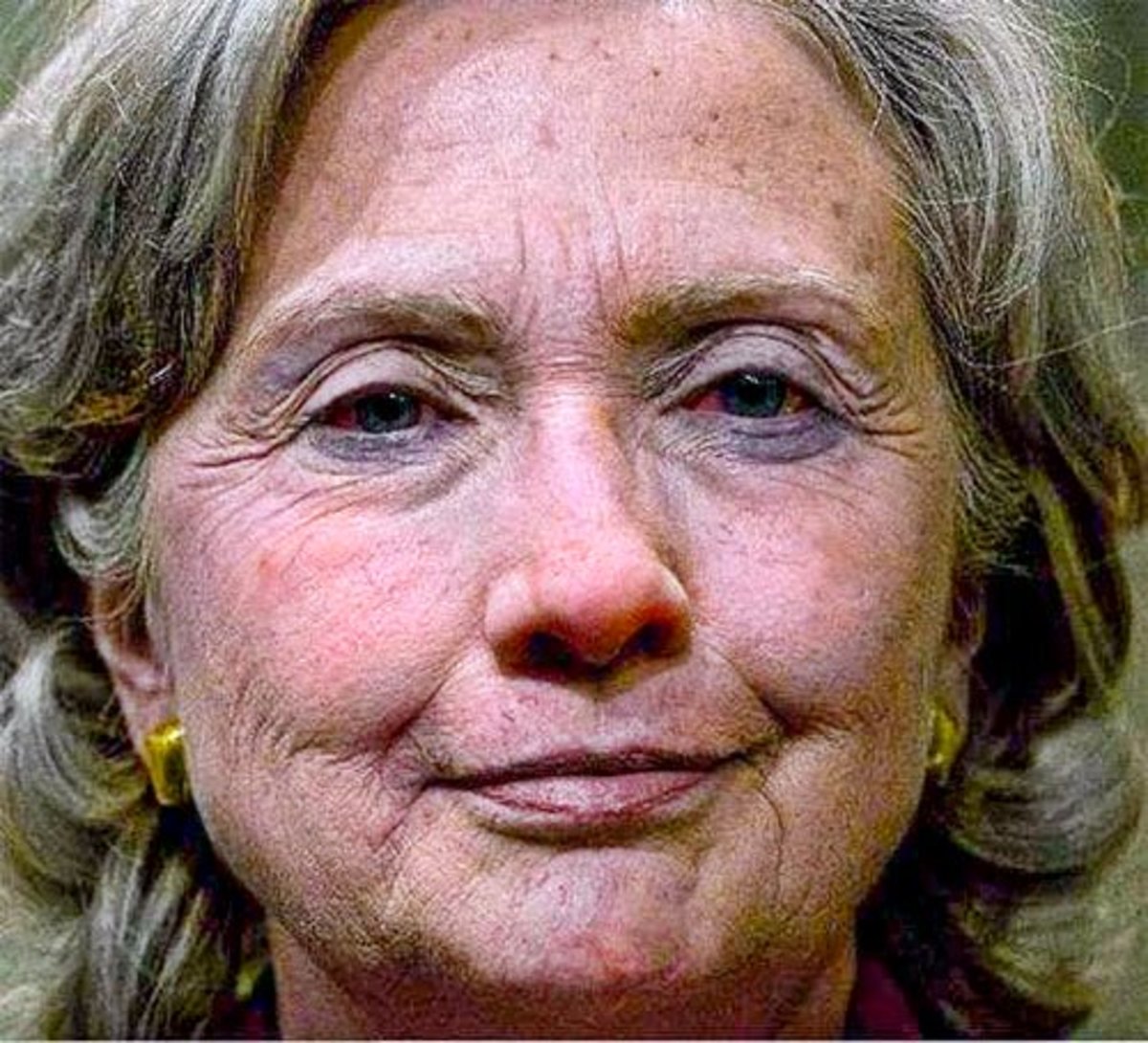


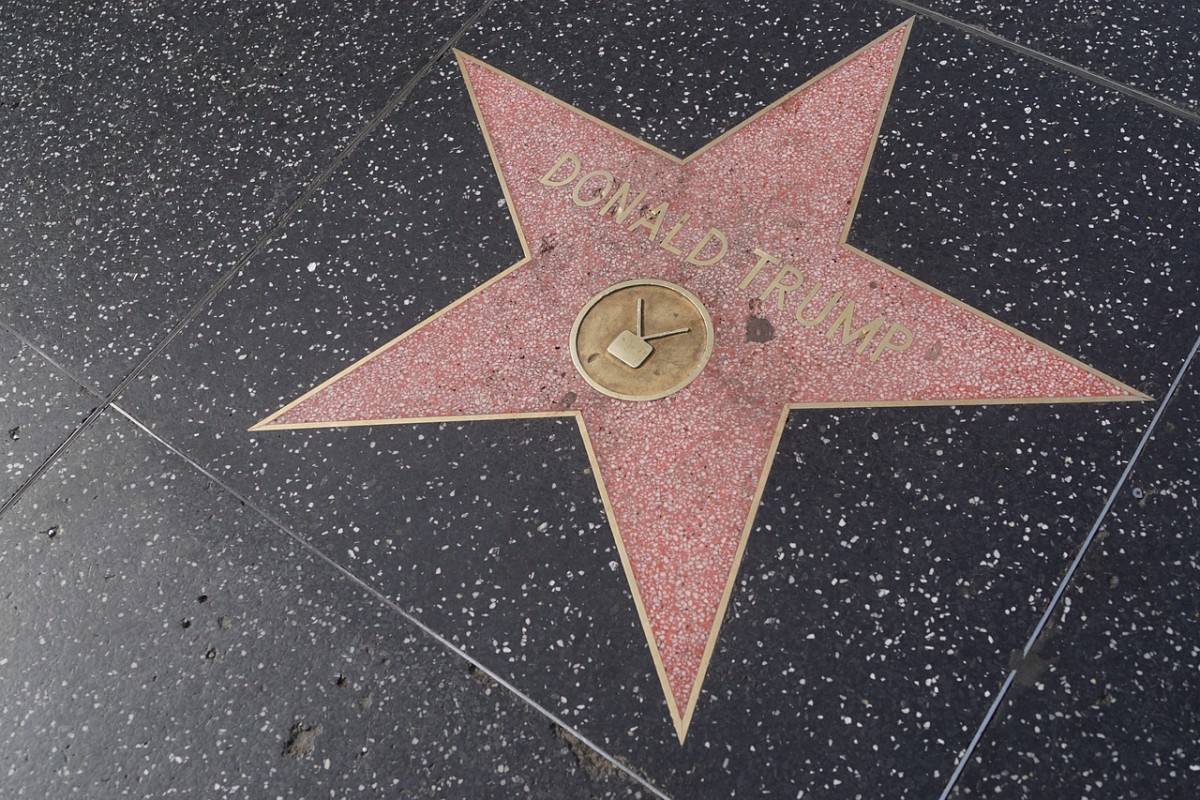
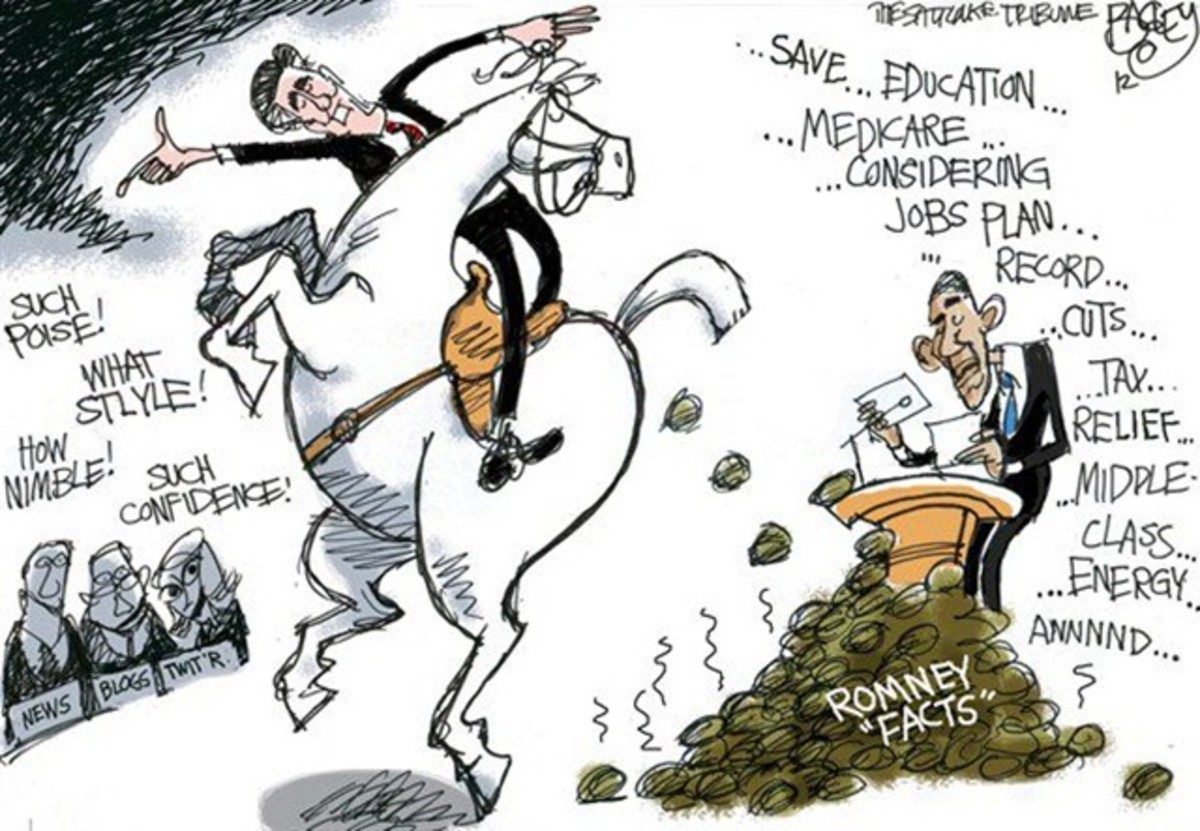
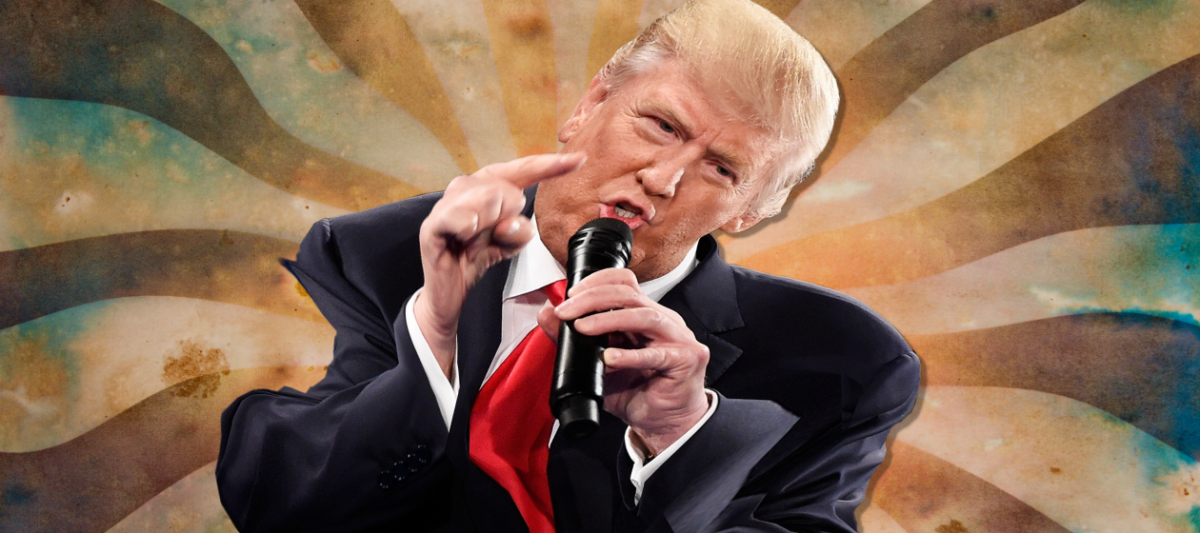
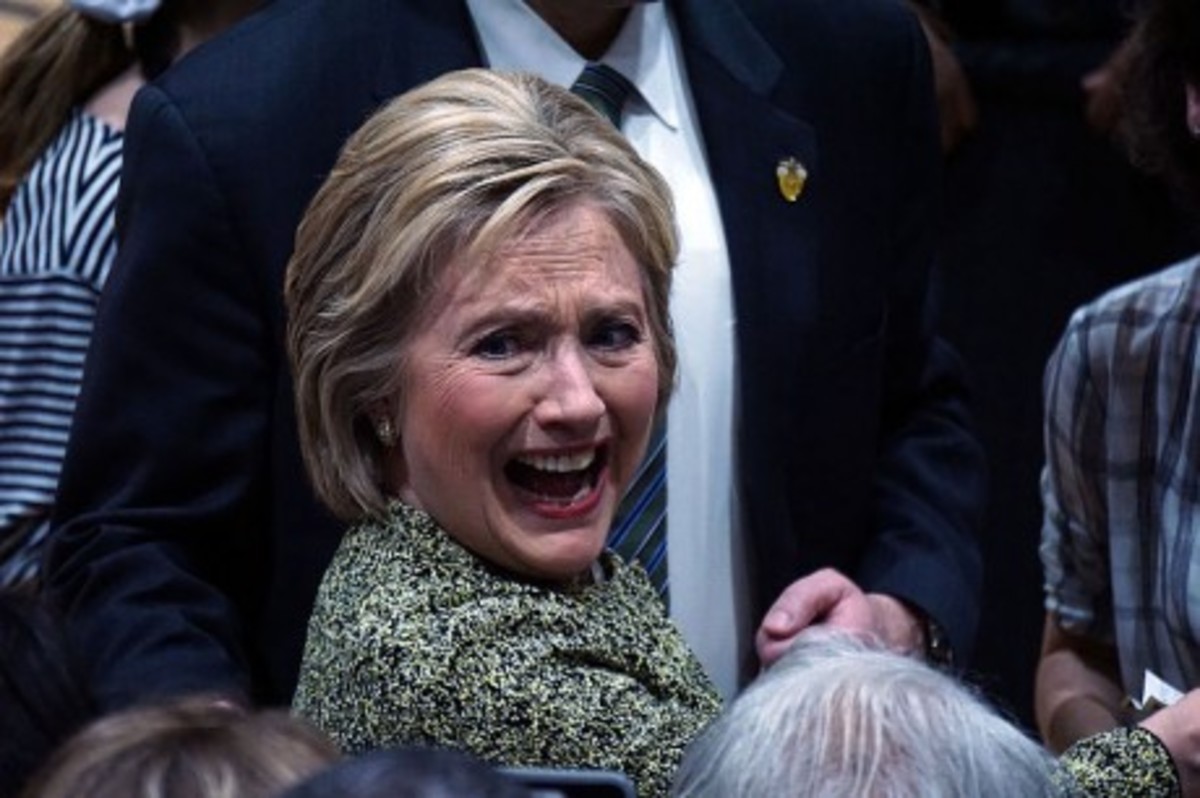
![American Politics: The BIG LIE in Politics, From The Republican Presidential Convention [124] American Politics: The BIG LIE in Politics, From The Republican Presidential Convention [124]](https://images.saymedia-content.com/.image/t_share/MTc2NDYyMjI1MzEyNjU1MzIy/the-big-lie-in-politics-from-the-conservative-side.jpg)